Just over a week remains in the race to qualify for the Rio Olympics but developments in Tahiti have left both men’s singles and doubles spots in the balance as Phillip Chew stayed safe but Bodin Issara threatens to follow Michael Fuchs and Ko Sung Hyun in letting slip a second ticket.
By Don Hearn. Photos: Badmintonphoto (archives)
It is down to one solitary week remaining in the race to qualify for the badminton events of the Rio Olympics in 2016. Only three tournaments remain – the continental individual championships for the Asian, European, and Oceanian confederations – and still dozens of Rio tickets have yet to be mathematically clinched.
Technically, there are also two championship tournaments going on in the Pan Am region but the individual event does not offer world ranking points and at the mixed team event, no participants who have a chance of booking a spot for Rio can surpass the points they already earned from the TUC qualifiers or last May’s Sudirman Cup.
The double tickets
In recent weeks, there have been changes in the holders of double tickets for Rio. Michael Fuchs (pictured right, with Johannes Schoettler) is still on the books for mixed doubles but he was replaced by Bodin Issara (pictured top, with Nipitphon Puangpuapech) as one of the last men picked for men’s doubles at the same time that Issara moved into mixed contention as well. Shortly thereafter, Ko Sung Hyun had to return his tentative men’s doubles ticket to Kim/Kim when they won the Malaysia Open. Now Issara’s own second spot is under threat on three continents.
Every time a player qualifies in two disciplines, it opens up an additional spot in the singles field. When Ko Sung Hyun booked a second spot, it looked as if the top Czech would enter the fray but when his compatriots took that spot away again, it left Milan Ludik – ahead of Petr Koukal thanks to his performance in Tahiti -hoping for an unused Oceania continental spot.
Now Issara is under threat in both men’s and mixed doubles, as his pairs are part of the bottom cluster of non-continental qualifiers in both disciplines. In mixed doubles, they are the bottom of four pairs separated by just 500 points, with two pairs coming right up behind them. In men’s doubles, he and Puangpuapech are holding the last non-continental spot but it too could slip away in the next few days.
What happens in Tahiti doesn’t stay in Tahiti
At the beginning of the week, the only pairs from Africa in the top 50 were fighting to stay there. In mixed, Egypt’s Abdelrahman Kashkal / Hadia Hosny failed to win a match at the Tahiti International Challenge and that means that they will drop out of contention for a Rio spot if Malaysia’s #2 pair simply show up for their first round match in China.
In men’s doubles, Andries Malan and Willem Viljoen (pictured above left) of South Africa only won one match but it was enough to keep them away from the brink and move up a few hundred points from #50 to a slightly less dangerous #47. Had they lost, they would have moved up only one spot and been caught by two Asian pairs just showing up next week. As it is, there are still two pairs in Asia and two in Europe who have a chance of inching ahead of the South Africans, but only with a major early round upset on Wednesday.
Actually, the pair with the best chance of passing Malan and Viljoen will make things even more interesting. Matthew Chau and Sawan Serasinghe (pictured above right) of Australia started the week at a lowly #60 but with a semi-final appearance in Tahiti and their expected Oceania title next weekend (which would yield Grand Prix-level points), they should slide comfortably into the top 50 and this would whittle the cluster around the #28 range down to just one pair.
At present, the cluster has Cwalina/Wacha of Poland just in front of Issara/Puangpuapech of Thailand, with Germany’s Fuchs/Schoettler waiting in the winds, and Kedren/Puavaranukroh of Thailand less than a thousand points behind their compatriots. Depending on what happens with the Africans and Australians, we could end up with the top Thais, Poles, and Germans all in but if all goes according to ranking next week, we will only see one of these four in Rio.
Pan Am contingent takes shape
This week, the last pieces of the puzzle fell into place for the Pan Am region. Phillip Chew and his two partners had played well all year but for the final decision, Canada’s Ng brothers’ last gasps for the Pan Am Rio spots hit the skids.
Derrick Ng and Adrian Liu lasted one round longer than Chew and Sattawat Pongnairat last week in Peru but losing in the semi-final meant they had no chance of catching the USA pair in Tahiti. As for Derrick’s brother Toby, he and Alex Bruce were beaten in consecutive weeks by Russia’s Vitalij Durkin / Nina Vislova, denying them the International Challenge title they needed to pass Phillip Chew and Jamie Subandhi (pictured right).
As for Eva Lee and Paula Obanana, the top Pan Am women’s doubles pair, while it looks like they are in possession of a continental spot, ranked as they are just below England’s Olver and Smith, they should end up being considered to have qualified outright. With Poon Lok Yan in the midst of recuperating from a serious knee injury and Mapasa Setyana still not cleared to represent Australia in a tournament that will take place less than 3 years after she played for Indonesia in the World Juniors, the likelihood is that Lee and Obanana will be among the top 16 eligible pairs regardless of continent.
Quiet at the top
As far the top ten goes, by far most of the uncertainty is within the teams as Korea and China both have to choose 2 of three top 8 pairs represent them in Rio, decisions which will not always be based on ranking points. The one remaining exception is the possibility that Naoko Fukuman and Kurumi Yonao (pictured above left) could displace Jang Ye Na and Lee So Hee (pictured above right) as the #8 women’s doubles pair.
The Japanese pair looked very threatening up until their finals appearance at the India Open but at this point, while they might fancy their chances of seeing Jang/Lee stopped before the semi-finals, they would still need to reach the final themselves at the Badminton Asia Championships in order to catch the Koreans. The top 8 of men’s and mixed doubles were set by the end of the Malaysia Open. Now Korea must choose two men’s pairs from among three and China has a similar choice in both women’s and mixed.
In singles, things are almost the same. There, too, China has three men in the top sixteen and five players in the top 16 of women’s singles. Denmark has three men and Hong Kong could end up with 3. Japan is the only other team with a singles choice, with three women and Yui Hashimoto still with a shot of clawing back in.
Porntip Buranaprasertsuk (pictured right) is the latest addition to the top 16 and she is still vulnerable to being bumped out by Yui Hashimoto or by Kirsty Gilmour or her own team-mate Busanan Ongbamrungphan.
In the men’s event, too, you have players like Wang Zhengming and Wei Nan who can only be considered for Rio if they climb a little higher to get into the top 16 but with, respectively, three and two compatriots already there, Wang and Wei are unlikely to be heading to Brazil this summer.
The last player with a realistic shot of adding to his nation’s total is Korea’s Lee Dong Keun. He had some key wins in recent weeks but also two unexpected losses to Thailand’s Tanongsak Saensomboonsuk, against whom he had a 6-3 record prior to this month. At this point, Lee can catch current #16 Rajiv Ouseph if the Brit loses early in the European Championships and if the Korean can reach the quarter-finals in China. If he needs any more points than that, Lee would likely have to beat Lin Dan to reach the semis.
The mixed cluster
Even before the impending ouster of the Egyptians from mixed doubles top 50, their was a real peloton all gunning for the last 4 – now 5 – non-continental spots. Barely out in front are Fuchs/Michels with 43,883, then Mateusiak/Zieba, Arends/Piek, and Issara/Amitrapai are all within 500 points of the Germans.
Once the Egyptians are passed by Tan/Lai and possibly some European pairs, Japan’s Kenta Kazuno /Ayane Kurihara (pictured, bottom left) will be in, with Vitalij Durkin / Nina Vislova (pictured, bottom right) just over 1,000 points behind. Technically, any one of the six pairs has a mathematical chance of being the one left behind.
![RACE TO RIO – One more double in jeopardy Just over a week remains in the race to qualify for the Rio Olympics but developments in Tahiti have left both men’s singles and doubles spots in the balance as […]](https://www.badzine.net/wp-content/uploads/ngg_featured/20151119_1515_HongKongOpen2015_Yves2283_rotator.jpg)
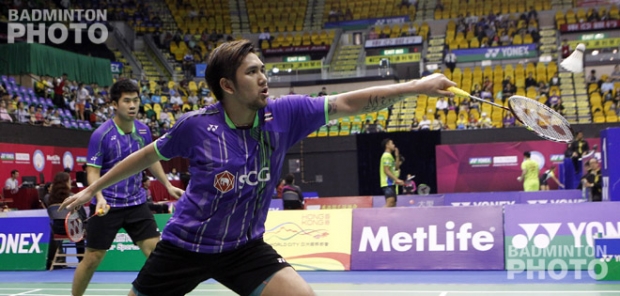
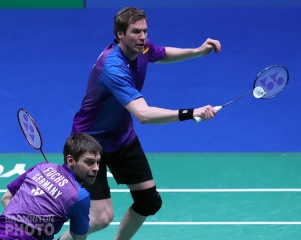
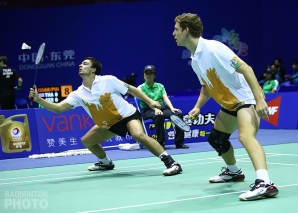
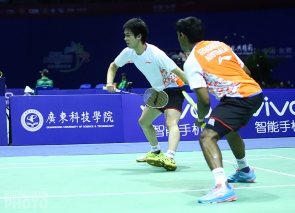
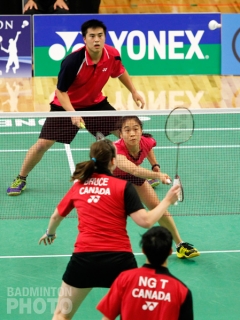
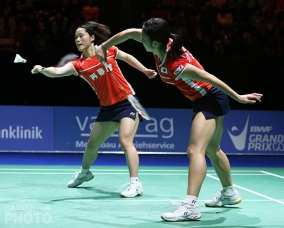
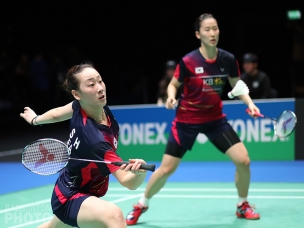
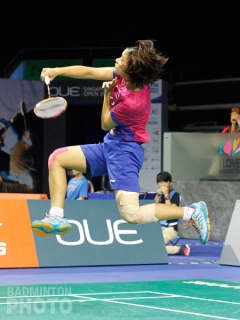
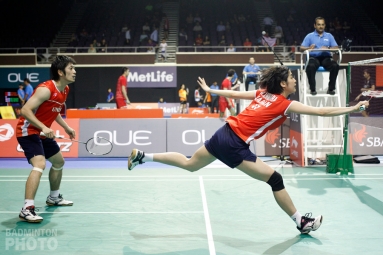
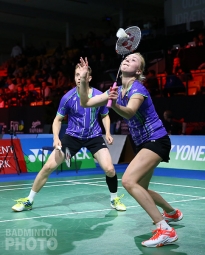

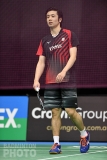
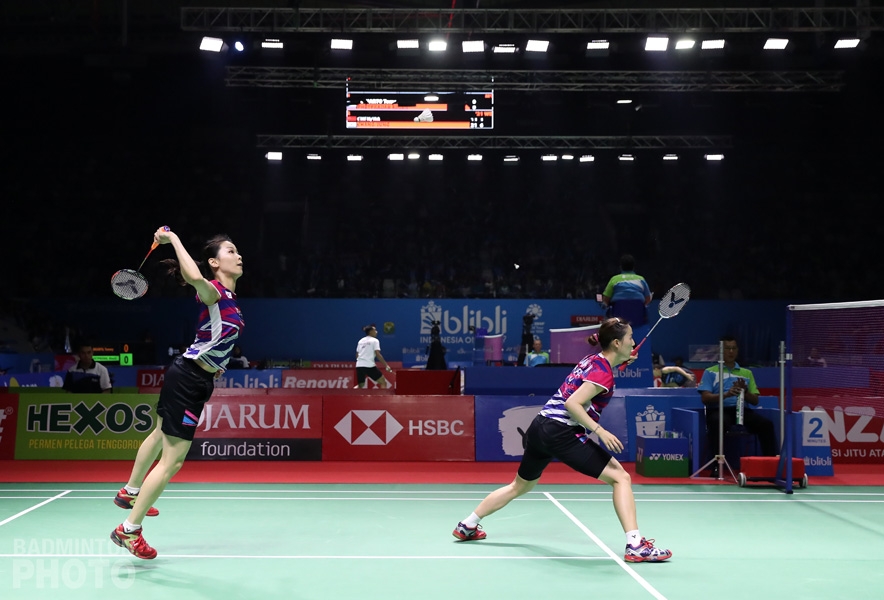
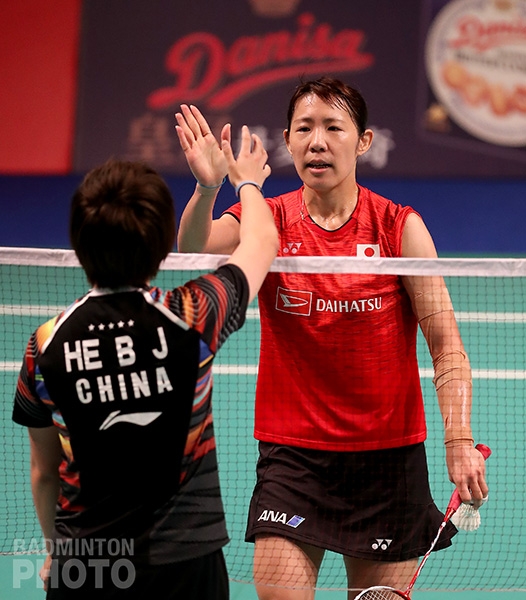
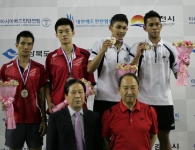


Leave a Reply